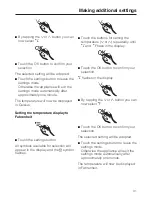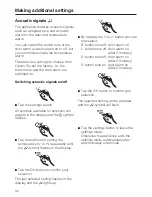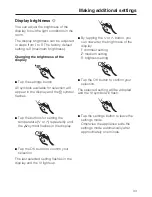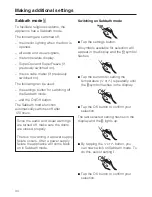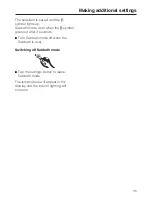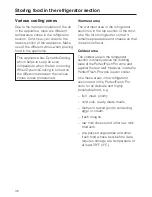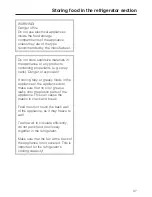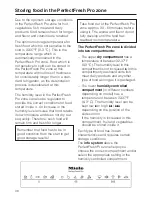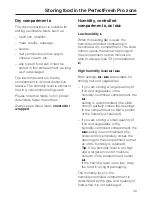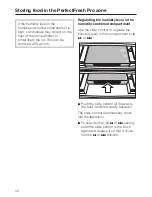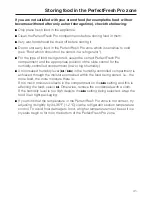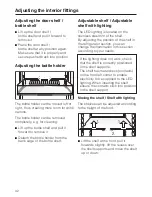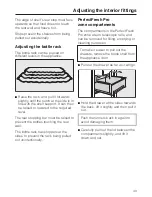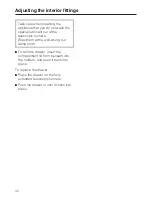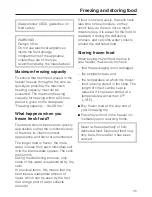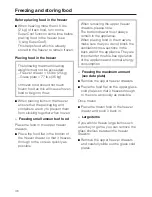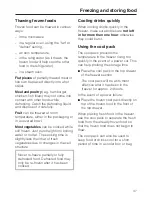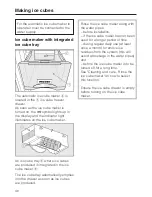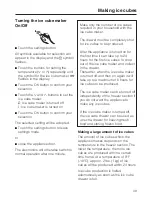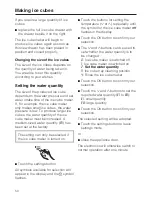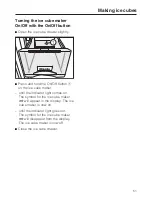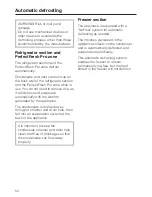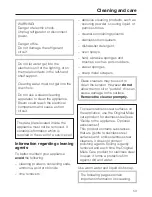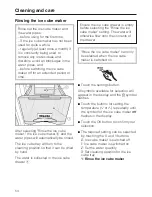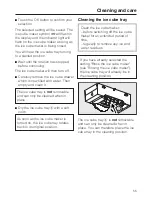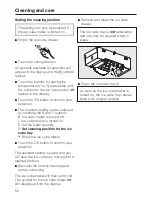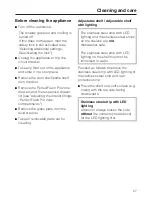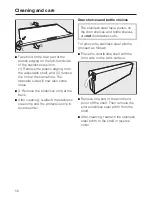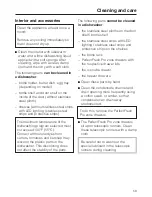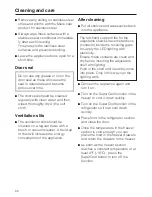
Always follow USDA guidelines on
food safety.
WARNING!
Danger of fire
Do not use electrical appliances
inside the food storage
compartments of the appliance,
unless they are of the type
recommended by the manufacturer.
Maximum freezing capacity
To ensure that fresh food placed in the
freezer freezes through to the core as
quickly as possible, the maximum
freezing capacity must not be
exceeded. The maximum freezing
capacity for freezing within a 24-hour
period is given on the data plate:
"Freezing capacity ....Ibs/24 hrs."
What happens when you
freeze fresh food?
Fresh food should be frozen as quickly
as possible so that the nutritional value
of the food, its vitamin content,
appearance and flavor are maintained.
The longer food is frozen, the more
water is loses from each individual cell
in to the intermediate spaces. The cells
then shrink.
During the defrosting process, only
some of this water is reabsorbed by the
cells.
In practical terms, this means that the
food loses a substantial amount of
liquid, which can be seen by the fact
that a large pool of water collects
around it.
If food is frozen quickly, the cells have
less time to lose moisture, so they
shrink less. As there is not so much
moisture loss, it is easier for the food to
reabsorb it during the defrosting
process, and very little water collects
around the defrosted food.
Storing frozen food
When buying frozen food to store in
your freezer, make sure to check:
– that the packaging is not damaged,
– the expiration date and
– the temperature at which the frozen
food is being stored in the shop. The
length of time it can be kept is
reduced if it has been stored at a
temperature warmer than 0°F
(-18°C).
^
Buy frozen food at the very end of
your shopping trip.
^
Place frozen food in the freezer im-
mediately upon returning home.
Never re-freeze partially or fully
defrosted food. Defrosted food may
only be re-frozen after it has been
cooked.
Freezing and storing food
45

